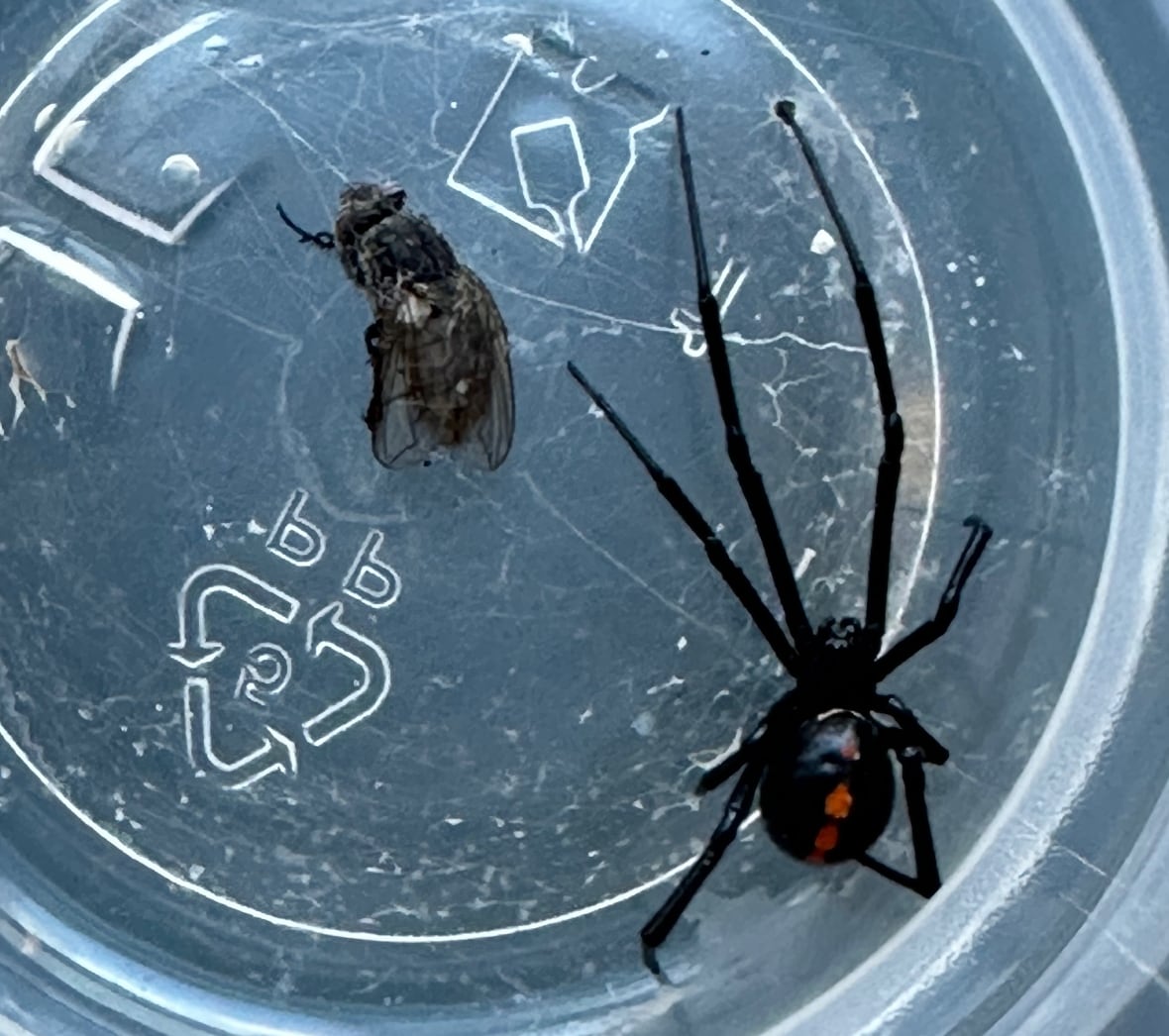When Lauren Schmidtke found an interesting-looking spider at her sister’s house in Airdrie, she wasn’t sure what exactly it was — until she took a closer look at a photo of it.
“I zoomed in and, sure enough, there was a perfect hourglass,” she said, referring to one of the most identifying traits of a female black widow.
“I honestly didn’t realize,” Schmidtke said. “I know how dangerous they are.”
Olds College entomology instructor Ken Fry identified the spider in the photos as a western black widow, the only spider in Alberta with venom potent enough to harm a human.
The small spiders, which Fry described as around the size of a chickpea, are naturally found farther south in Alberta’s drier habitats, around places like Lethbridge and Medicine Hat.
Fortunately for arachnophobes in the Calgary area, sightings of the spiders are “extremely rare” anywhere near the city, Fry said.
“It’s just not their native range,” he said. “They’re extremely restricted to southern Alberta.”
Any sightings around Calgary “would be the result of equipment or material being transported from the southern parts of the province,” he said.
Fry said black widow sightings reported in Calgary are often misidentifications of similar-looking spiders like the boreal combfoot. The spiders most commonly found in Alberta don’t have venom strong enough to harm humans.
“The black widow is the only one that has a venom that has a neurotoxic effect,” Fry said.

The western black widow’s venom is extremely potent: it contains a neurotoxin called alpha-latroroxin, which directly targets the central nervous system of mammals and other vertebrates.
As scary as that sounds, black widow bites are extremely rare. According to an article in the Journal of Medical Entomology, there were only five confirmed cases of black widow bites that required the use of antivenom in Canada, all of which occurred in British Columbia, from 2009 to 2015.
“It is very, very rare,” Fry said. “You might get some nausea, sweating, stomach cramping, things like that.”
There are no recorded cases of the venom of a black widow killing anybody in Canada. There have been no confirmed fatalities in the United States either, though there have been deaths caused by the brown recluse, another highly venomous spider that lives in parts of the United States but is not naturally found in Canada.
Part of why black widows are unlikely to send anybody to the hospital is because they are “extremely timid spiders,” Fry said.
“They’re not aggressive at all,” he said. “The one I had in my lab, if I would come to feed her, she would immediately scuttle away and hide in a corner as soon as anything big came.”
He said a black widow would typically only bite a human if it felt like it had to.
“The chance that it would bite you is extremely rare, unless you intentionally provoke it, or in the unlikely event that you stick your hand into its web and it feels threatened.”

Fry said people worried about encountering black widows should take proper precautions when reaching into old boxes or underground spaces.
“It’s simple: just wear gloves if you’re going to be probing about in dark spaces,” he said.
In the event of a confirmed black widow sighting somewhere the spider shouldn’t be, like in the Calgary area, Fry said the best course of action would be to humanely euthanize it.







